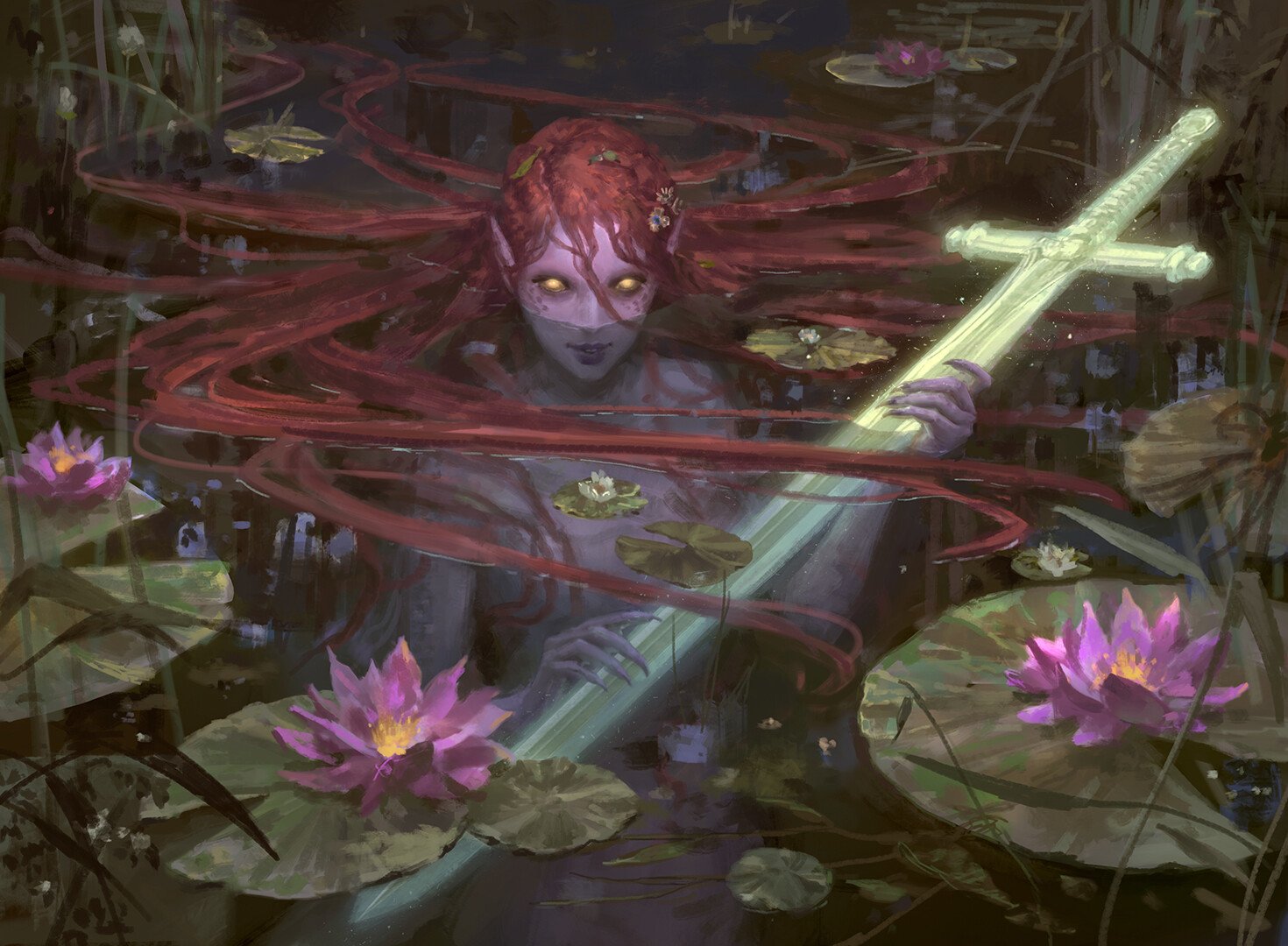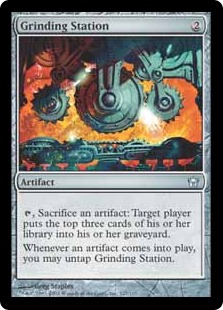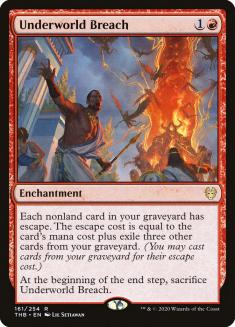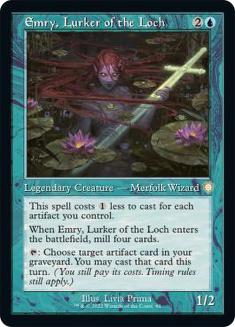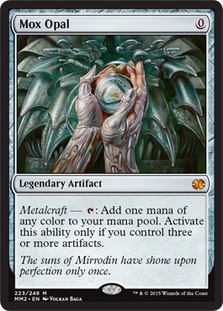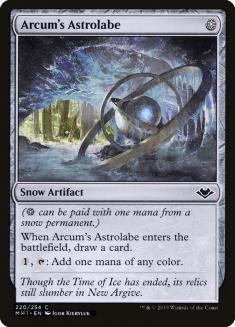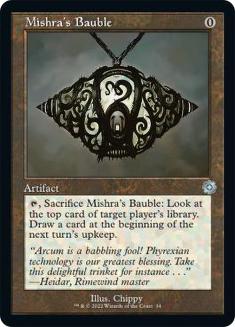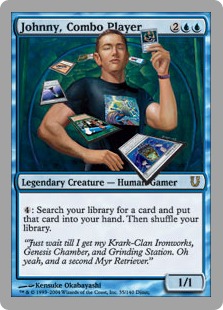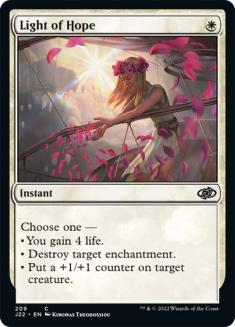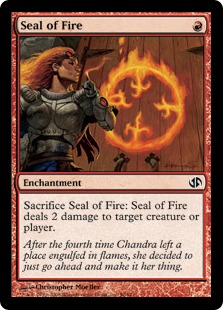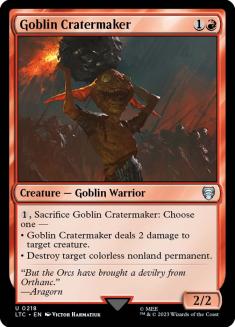I miss paper Magic.
The rest of the community is in the same boat as I am and the eventual return to tournament play is something that I look forward to with each passing day. There’s something special about physical cards, in-person opponents, and the gathering that ensues. Digital Magic is a great, temporary substitute; however, the source of this game’s strength rests in tabletop play.
The last physical tournament I played in was SCG Regionals and that tournament went very well for me. I managed to not drop a match on my way to hoisting the trophy, with the assistance from the most powerful deck in Modern. Claiming that any deck is the best, or the most powerful, is bold. This is not something I do on a hunch, but an assertion made from my many years of competitive experience. The power level of specific decks and cards becomes painfully apparent for anyone who has played as many tournaments as I have. Through hundreds and hundreds of hours of testing for high-level events, it’s easy to determine which cards must be played for their strength in their respective format. This is the case for Grinding Breach.
One of the reasons a deck’s metagame share might decline is the effectiveness of the hate against it. Ironworks was in the exact same situation and plays very similarly to Grinding Breach. Players steered far away from Ironworks for most of its existence due to the difficulty in piloting around hate cards of the format. Not everyone was able to defeat a Stony Silence, Rest in Peace, or Leyline of the Void right off the bat. This was a skill that few mastered and it has paid dividends in the competitive scene. Eli Kassis and I couldn’t put Ironworks down and we’re circling back to Grinding Breach in the same vein.
Outside of the difficulty these decks have against artifact and graveyard hate, their popularity waned the moment a difficult matchup appeared. I remember the despair my colleagues felt when Bant Spirits picked up speed in Modern and tormented players attempting to resolve a Krark-Clan Ironworks. That deck, along with some current tough matchups that Grinding Breach has, is not on the same power level and will collapse to the format’s natural selection.
Decks that are good for a specific metagame but are not outright powerful tend to not stay on top of the competitive hill for long. Eventually players tweak their favorite deck, using the deep card pool available, and are able to overcome these metagame calls relatively easy. It only takes one or two powerful additions to make a once bad matchup good, and that is what happened with the release of Lurrus of the Dream-Den.
Creatures (10)
Planeswalkers (4)
Lands (21)
Spells (25)

Grinding Breach has drastically changed to accommodate the new companion that has overtaken Modern. There are some popular decks that showcase Lurrus in a traditional sense, like Burn, but my teammate and friend, Eli Kassis, has discovered another avenue for it. Having multiple copies of a companion in the deck, but none in the companion zone, is quite unorthodox. I was very skeptical at first, trying other iterations to get a Lurrus as my fifteenth sideboard card only, but Emry, Lurker of the Loch is far too important.
How good is Lurrus as just another spell in this Modern combo? That was the question I had to thoroughly answer before abandoning the original list that brought me a lot of success.
Lurrus has been as overpowered as the rest of the cards in Grinding Breach. I haven’t done much to alter Eli’s list outside of adding Urza, Lord High Artificer, and that is because of how well he built it. The deck maximizes Lurrus while conceding nothing to the overall combo engine of the deck. Pyrite Spellbomb is a fine removal spell that can be used over Galvanic Blast here, the Chromatic Star is an effective cantrip, and more Mox Ambers are potent with the additional legendary creatures. The rest of the maindeck is a replica of my winning list and continues to dish out Turn 3 wins without missing a beat. The upside here is the Turn 4 strength of Lurrus to retrieve missing pieces, dig through the deck, gain life, and apply pressure. These aspects were missing in the last variation of the deck and the power of this companion is on full display here.
The legendary permanents in this deck put it over the edge in terms of power level. There are a few decks in Modern that can kill on Turn 3 or Turn 4. Grinding Breach isn’t the only combo deck in town that can cast a combo piece on Turn 2 and then kill on Turn 3 in true glass cannon form. What separates this from the other combo decks in Modern is that the game is still easily won after Turn 3. The looming threat of combo death remains as other permanents make it very difficult to interact. Teferi, Time Raveler is the most powerful defensive card in the deck, and it creates nothing but headaches for all enemy matchups.
Teferi is one of those cards that exceeds maximum power level but will never be banned. It has ravaged every competitive format, making certain cards and strategies unplayable, and remains. The chief reason why this planeswalker will forever evade the banhammer is that it can be removed with relative ease.
The key word there is “relative” because some decks can’t apply the necessary pressure to answer it. If you’re up against a creature-based deck that can attack it down and only have one threat on the battlefield, you’re in trouble. When Teferi goes up to five loyalty and a Lightning Bolt is your form of interaction, the game is about to get very difficult. Being forced to play at sorcery speed is a drawback that is worth far more than three mana.
In Grinding Breach, Teferi completely protects the combo and adds to the Mox Amber fuel. Lurrus provides another three copies of similar defense, threatening to bring back a combo piece each turn. When combo pieces aren’t readily available, each of the artifacts can provide disruption or digging that leads to victory. Teferi buys time and draws cards, while Lurrus applies pressure and replenishes life. Leaving out either of these cards spells absolute disaster for the opponent, but there’s another legendary creature that adds to the torment.
Emry, Lurker of the Loch is the bread and butter of Grinding Breach. The initial trigger it has fills the graveyard and fuels Lurrus as well. Even without our new companion, Emry gets the job done on its own. The card advantage is out of this world, allowing continued card draw off of Mishra’s Bauble, Arcum’s Astrolabe, Pyrite Spellbomb, and Chromatic Star. This isn’t a new phenomenon of the format, but it is one that most players thought was finally gone after the last banning.
The removal of Mox Opal was supposed to stop decks like this in their tracks; however, the new tools that artifact-based decks received turned out to be too powerful on their own. Emry, Arcum’s Astrolabe, and Urza are all over the format, not just in Grinding Breach. Mox Amber is the unlikely hero that saved this combo deck, providing a source of mana when going off. Without Mox Opal, Grinding Breach, and decks like it, continue to show off the power level of the cards I’ve discussed here.
The only bannings that would effectively end decks like this would be either Arcum’s Astrolabe or Mishra’s Bauble. The former makes difficult mana possible in all decks willing to play a few Snow-Covered lands. Arcum’s Astrolabe is in the same pool as Teferi and is not going anywhere. Modern started with a Preordain and Ponder ban, hindering blue’s consistency in combo and control decks. Although Arcum’s Astrolabe only gives you the top card, the mana consistency, combined with broken artifact interactions, is on par with those blue cantrips. The mana advantage that comes with it is through the roof and provides controllers easy mana fixing without the cost of life while also moving through the library.
Somehow, Mishra’s Bauble has remained in Modern. Unlike Arcum’s Astrolabe, there’s no restriction on including four copies of this zero-mana artifact. Each deck in Modern seems to play it now, since it effectively allows for a smaller starting deck. Grinding Breach takes full advantage of these cheap artifacts for the reasons mentioned but also uses them to fuel the combo pieces themselves. Outside of the combo, Lurrus, Emry, and Urza all become bombs with their very existence. The combination of these cards creates the most powerful combo deck in Modern that’s miles ahead of the competition. It isn’t just the consistency of the early-game combo kill but the resiliency of the mid-game backup plan. Lurrus continues to push this deck over the edge, leaving the hate cards as the lone obstacle for Grinding Breach.
Game 1 is tough to lose with Grinding Breach. The deck jams a consistent two-card combo that can’t be interacted with easily. The graveyard and artifact hate doesn’t come until the sideboarded games, which gives the Grinding Breach pilot a huge advantage to start. It has never been easy to beat Rest in Peace or Stony Silence since the combo is neutered by either enchantment. With the old Grinding Breach deck, I knew that those types of cards were coming so I dropped in a couple of Blood Moons and a third Urza. That sideboarding option is still here because I have a hard time not including Blood Moon in any deck capable of effectively casting it.
Blood Moon still doesn’t get enough play in Modern. It completely locks out the opponent if they’re playing a multicolor manabase without Arcum’s Astrolabe. When Blood Moon is relevant, Grinding Breach has an additional combo that ends the game upon arrival, making it that much harder to play against. Decks that have the white enchantments are often susceptible to having all their lands become Mountains. Even if they are immune to Blood Moon, the additional Urza gives another route to victory that can ignore the hate cards of the format.
Normally I would insist playing a Wear // Tear, or some type of specific enchantment removal, but that need is gone. In Eli’s list I noticed Light of Hope, which is an amazing option given to us by the new set. Gaining four life for one mana is good enough to bring in against Lurrus Burn, but also having a built-in Demystify that knocks out hate cards and Eidolon of the Great Revel is something special. I haven’t experienced it yet, but I look forward to the game where one of my creatures getting a +1/+1 counter wins the game.
The rest of the sideboard has been formed around Lurrus. Seal of Fire is an obvious nod to the new companion, providing another stream of removal while the creature is on the battlefield. Most of the problematic cards have two toughness or less, making Seal of Fire and Pyrite Spellbomb adequate removal spells. Goblin Cratermaker acts as an answer to small creatures, Chalice of the Void, Tormod’s Crypt, or any artifact that can halt the combo.
In sideboarded games and after Turn 3, Grinding Breach has elevated thanks to Lurrus. Although it isn’t intuitive to build around a card like this outside of the companion zone, it works here. Anyone who first looks at a deck like this can tell non-traditional things are happening and will fully realize the power level of this deck soon after playing it.

